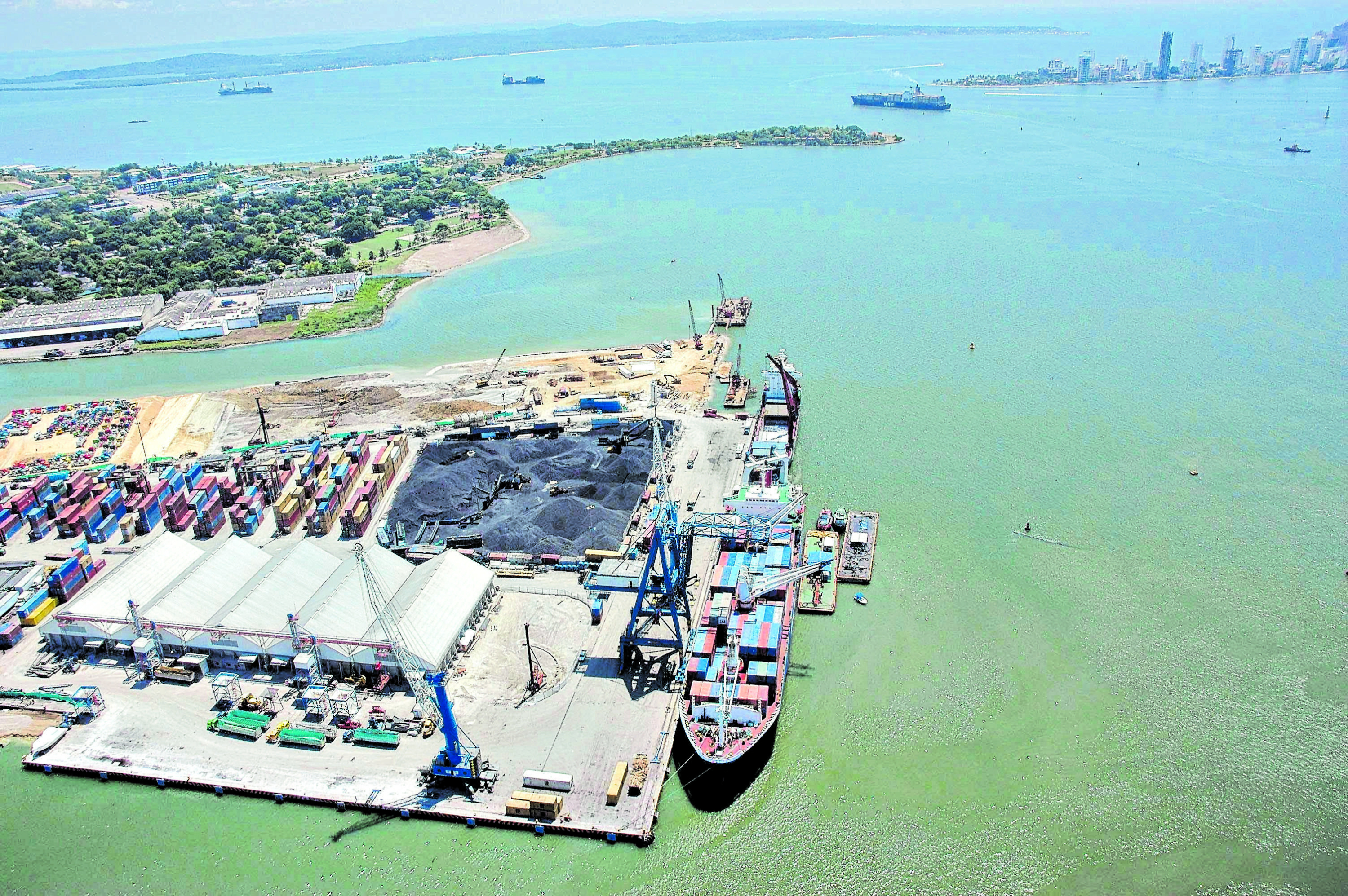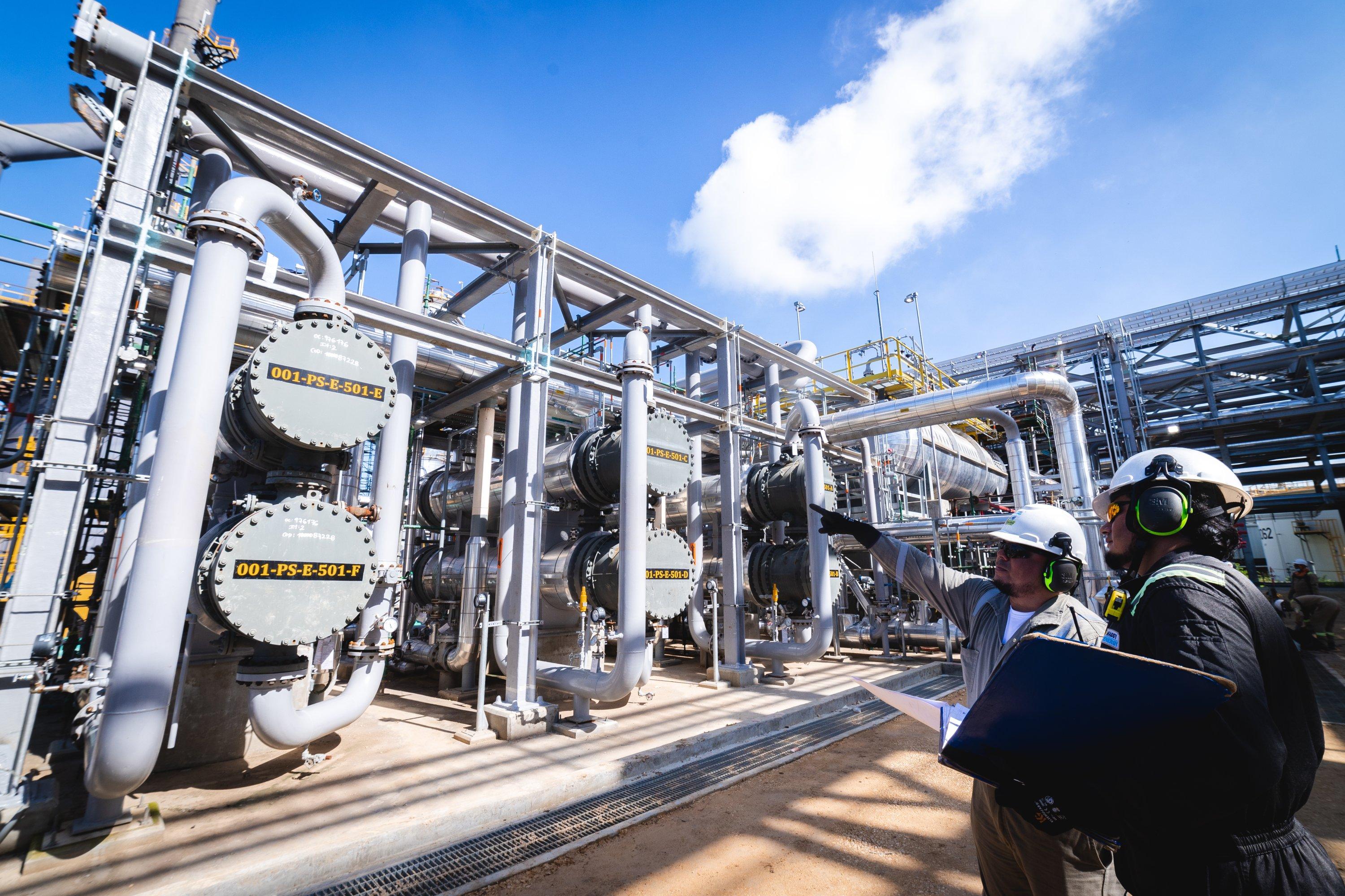To what extent is Colombia managing to replace the gap in oil and coal exports with sales of other goods?

After three years of decisions against the sectors responsible for Colombia's two main exports, oil and coal , the idea that what is lost in these sectors will be compensated by other products is far from reality, as is evident from analyzing the fate of total sales of goods abroad during that period.
Colombia's leading exporter is petroleum and petroleum derivatives, accounting for 30 percent of the total in 2024. Coal (all coal, coke, and semi-coke) is second, accounting for 14 percent last year.
While measures are being taken to weaken these activities—with the goal of reducing their dependence on both foreign trade and the economy in general—during this time, there has been a significant drop in the volume of oil and coal exports , while other exports have grown. At first glance, this is the expected effect for an economy that is growing thanks to diversification and is on the path to becoming cleaner.
However, reality shows that total Colombian exports of goods are falling . The question then arises as to whether the growth in exports other than oil and coal is or is not filling the gap left by the decline in these minerals, as the government proposes.
The answer lies in the results of Colombian sales abroad in recent years, and this analysis shows the following:
The balance of changes in Colombian exports over three years Since the 12 months ending August 2022, annual coal and oil exports have fallen from 53.4 percent of the total at that time to just 41.1 percent in the year ending last April, just as the government's transition decisions are supposedly seeking.
According to the government, if these policies work and there is an induced decline in mining and energy production, the economic reconversion should be reflected in the strengthening of other activities, such as the additional production that should come from the promised reindustrialization process . However, in the words of Bruce Mac Master, president of the National Association of Entrepreneurs of Colombia (Andi), "in recent years, we have experienced a significant loss of dynamism in the industrial sector, as in most of the Colombian productive sector."
This, in official figures from Dane, is seen in that for the full year ending last April , manufacturing production fell 4.9 percent compared to the 12 months ending in August 2022 , when the reindustrialization policy began.
Meanwhile, annual exports of coal, oil, and their derivatives fell from $29.349 billion in the year ending August 2022 to $20.507 billion in the year ending April 2025. The decline amounts to $8.841 billion, or more than 30 percent.

Coal sales abroad have suffered a dramatic decline. Photo: Manuel Pedrza, Archive / EL TIEMPO
In oil and petroleum products alone, the drop was $4.387 billion, a 23 percent drop , while in coal it was $4.455 billion, a 42 percent decrease. "Sectors that had been leaders in the functioning of our economy," says Mac Master, "were withered by an ideological discourse."
Sergio Cabrales, professor, researcher, and consultant in the mining and energy sector, mentions that both oil and coal exports have been affected by price reductions .
"The price of coal in Rotterdam," Cabrales recalls, "exceeded $450 per ton in 2022, with an annual average of $350 per ton. Currently, prices are around $100."
But in addition to the drop in the dollar value of these foreign sales, so far this year the daily volume of exported oil and derivatives is 3.2 percent lower than that seen in 2022. And for coal, that volume is 35.4 percent fewer tons per day.
According to Cabrales, coal and oil production have also been affected by internal factors such as attacks and blockades of coal transportation infrastructure, "most notably the Cerrejón train, the Caño Limón–Coveñas pipeline, and the Bicentenario pipeline."
The growth of other exports and what they compensate for In the face of this decline in mining and energy sales, Colombia's exports of all other goods abroad increased from $25.657 billion annually in August 2022 to $29.357 billion annually last April. This represents a growth of $3.7 billion, or 14.4 percent, over those nearly three years .
Javier Díaz, president of the National Association of Foreign Trade (Analdex), explains that " the increase in our non-mining and energy exports is largely due to what has happened in international markets : greater demand, rising prices, and the search for closer suppliers. All of this has allowed us to grow, particularly in agricultural and agro-industrial products."
Coffee plays a significant role in this outcome, combining significant production volumes with record international prices. Regarding this, Mac Master comments that given the growth of this sector, "which depends immensely on international conditions... fortunately, the Federation responded, and we were able to take advantage of the good prices . Otherwise, Colombia would be in even worse trouble than we are today."
However, the increase seen in exports of goods other than oil and coal does not even cover half of the gap left by the decline in prices for these minerals . For every dollar gained in other goods exports, $2.40 was lost in sales of coal, oil, and its derivatives.
Even if services exports are taken into account, there is a growth from 2022 to November 2024 (most recent Dane data available) of 1.367 billion dollars annually, which, when added to the increase in non-mining energy goods , is not enough to cover the gap left by oil and coal .
For Cabrales, "it's not about offsetting losses from oil and coal, but rather about recovering the revenues of the mining and energy sector by adjusting internal factors and increasing the added value of exports across all sectors ."
In short, the growth needed to offset the decline in oil and coal prices is lagging and should be 138 percent higher than what has been seen so far, not to grow but to at least maintain the total value of exports .
In total, after adding and subtracting, Colombia is now exporting $5.141 billion less annually—9.3 percent less—of any product than it was three years ago, since the decline in oil and coal is more than double the growth of other products .
Thus, throughout this observed period, in terms of exports there is no transition, no substitution, no compensation.
What can be done to ensure that non-traditional exports compensate for the loss of oil and coal? The question then arises as to what can be done to ensure that exports of other goods produced by Colombia can compensate for the situation if the idea of abandoning the main mining and energy products persists.
According to Díaz, "we need to develop an export strategy that, through facilitating logistics and lower costs, allows new companies to enter the export market and increase foreign sales."
According to the president of Analdex, Colombia is not known for being an exporting country, and there are very few companies engaged in this endeavor. “ Despite having 9,000 companies registered as exporters, only 411 account for 90 percent of total exports . Likewise, our per capita exports are very low. Colombia should export around $100 billion, but we barely reach $50 billion.”
Thus, the union leader suggests that the export strategy should make selling abroad more profitable than selling in the domestic market. This would be achieved, he says, "by reducing logistics costs, which currently reach 17.9 percent of the product price, while our competitors average 9.5 percent . Deregulation, simplification, and facilitation should be the key. Having electronic processes and procedures, with digital documents, controls powered by technology and artificial intelligence, are among the tasks."
He adds that intelligence and commercial and health diplomacy are required to take advantage of the opportunities the current situation offers.
The economic impact on Colombia of the decline in oil activity While the halt in mining and energy activity has had a noticeable impact on exports, concerns have also been raised about the effects on jobs, lower tax and royalty contributions, and lower purchases of goods and services in the regions and communities.
The reduction in activities related to the two main exports, coal and oil, creates a domino effect, as they have always fostered productive chains associated with them . There are also concerns about the fate of social and environmental investments.
According to Frank Pearl, president of the Colombian Oil and Gas Association (ACP), when taking into account income tax, royalties, economic rights, and other taxes, "the contributions from the oil and gas exploration and production industry in Colombia were 25.7 billion pesos in 2023 and are estimated at 24.1 billion pesos by 2024."

There is concern about the effects of the halt in the oil sector on taxes, employment, and other contributions. Photo: Ecopetrol
According to the manager, " the decrease is due to lower production, lower prices and higher production costs ."
Regarding employment, the ACP notes that in 2024, oil activity will maintain 360,000 direct and indirect jobs. But now, " the downward trend in investment anticipates a negative impact on employment, especially in the recruitment of local labor ," says Pearl.
The foreign investment resources that Colombia has been losing There is also a notable impact on the foreign direct investment Colombia receives. According to the Balance of Payments accounted for by the Bank of the Republic, this investment, in total, went from $17.182 billion in 2022 to $14.269 billion in 2024, a loss of $2.913 billion annually, or 17 percent. But it is significant that a fifth of this loss has been borne by the oil sector , although it is worth noting that the other four-fifths of the decrease in foreign investment is due to other sectors of the economy.
The Government has already calculated the fall that will follow for oil, and the Medium-Term Fiscal Framework confirms the path that the Government foresees of producing less and less : from an extraction calculated for this year of 764,000 barrels per day on average, by next year it would be only 757,000 barrels and in 2037 it is thought to be 736,000, without significant progress being seen for the internal demand to be able to reduce.
This same objective of eroding activity is reflected in the fact that between 2023 and March of this year, the signing of new contracts in Colombia was zero, compared to 185 awards in Brazil and 13 in Peru , according to a compilation compiled by the ACP for the same period. According to this association's analysis, investment in exploration and production is recovering worldwide, with an emphasis on offshore projects and the use of fracking , but also with Latin America playing a leading role.
eltiempo



